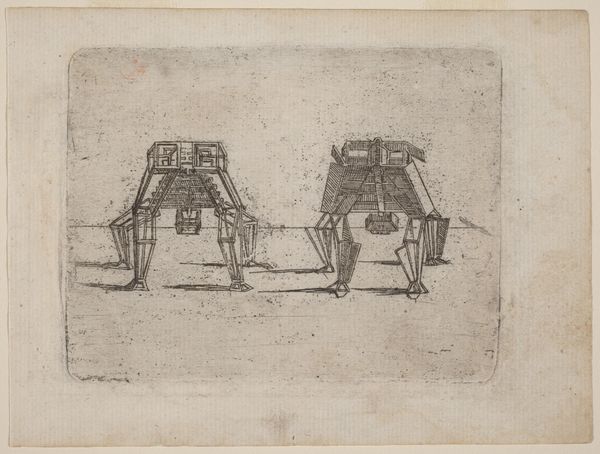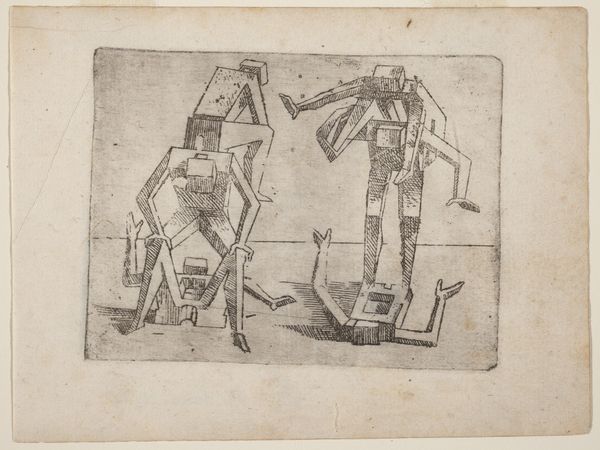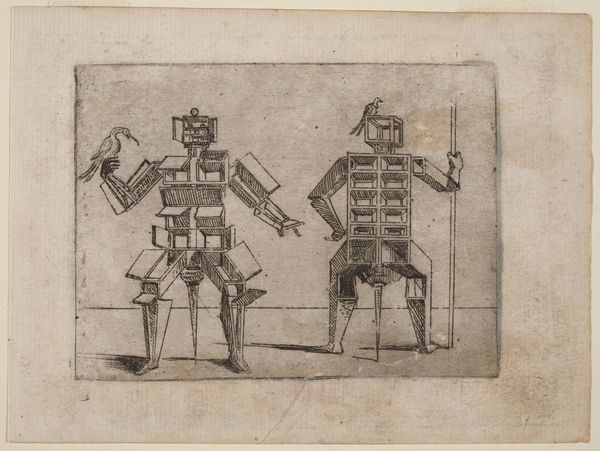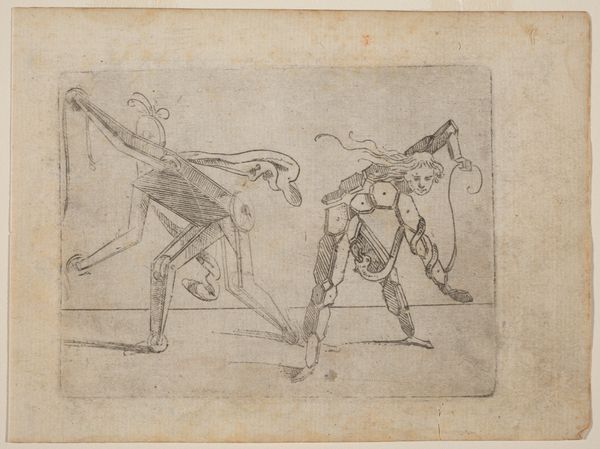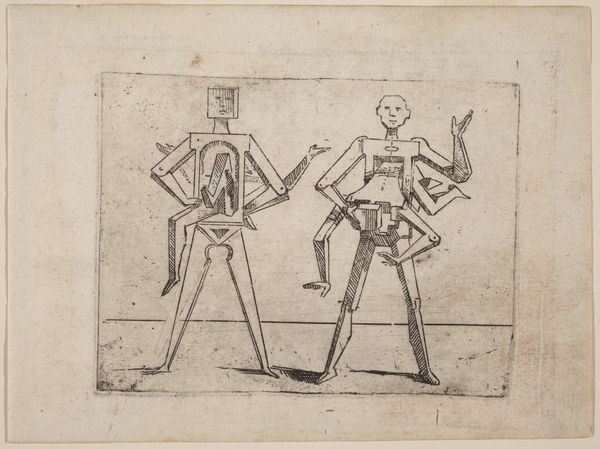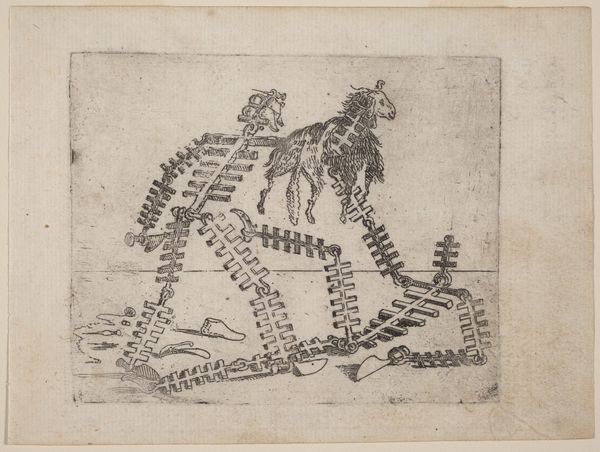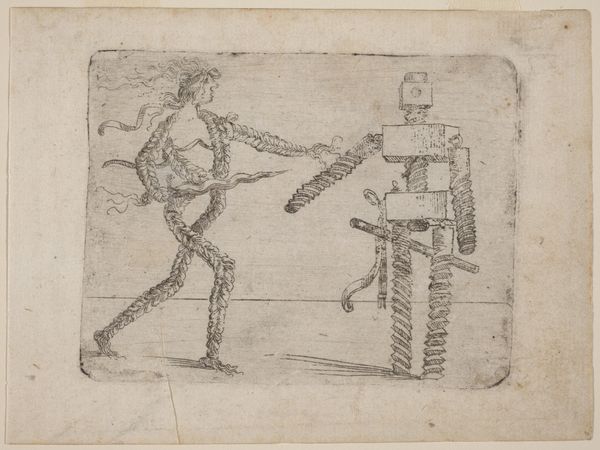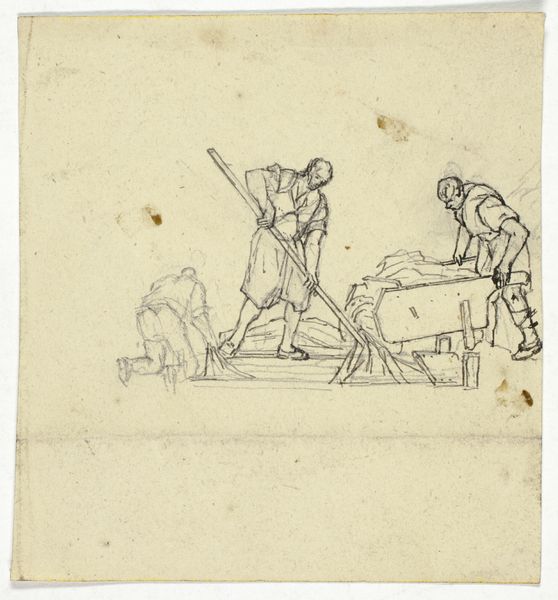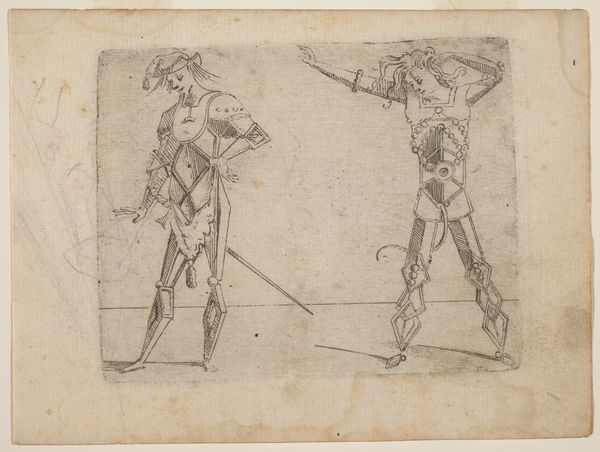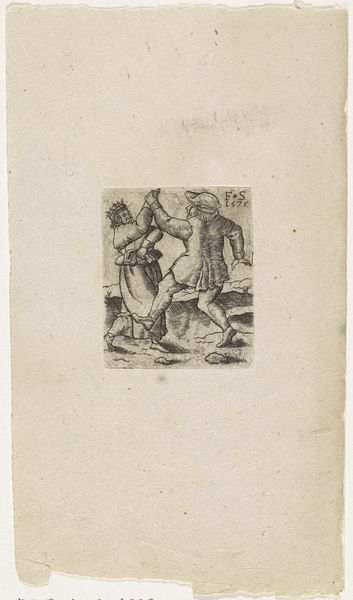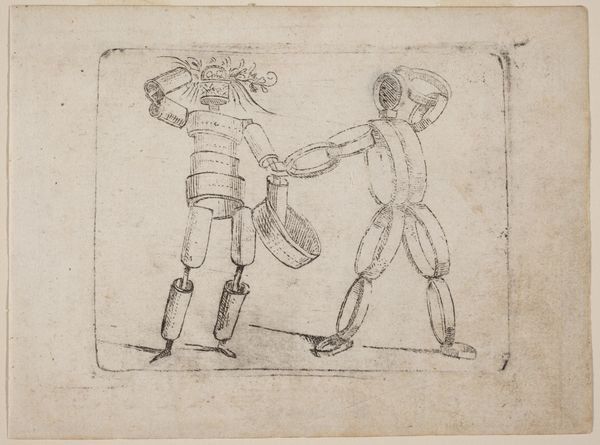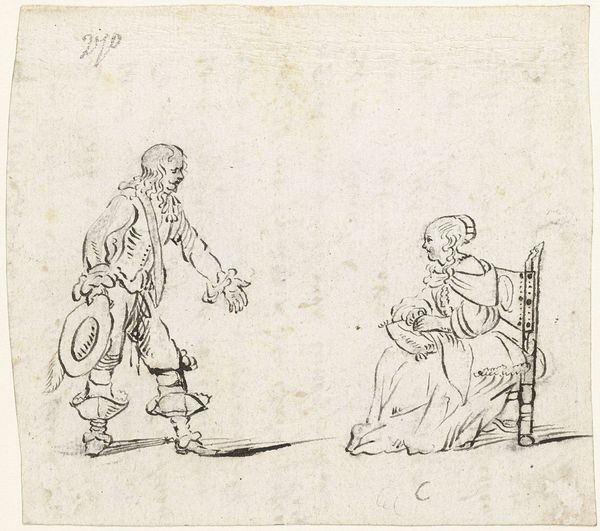
#
aged paper
#
toned paper
#
light pencil work
# print
#
pencil sketch
#
sketch book
#
personal sketchbook
#
sketchbook drawing
#
watercolour illustration
#
sketchbook art
#
watercolor
Copyright: National Gallery of Art: CC0 1.0
Editor: Here we have Giovanni Battista Bracelli’s “From ‘Bizzarie di varie Figure’”, created in 1624. It's a print, seemingly of very delicate lines forming strange architectural shapes that almost look like…creatures? There’s an element of fantasy here that intrigues me. What do you see in this piece? Curator: Well, from a historical perspective, consider the context. This was a period of intense intellectual and artistic exploration. Bracelli's "Bizzarie" emerged in a culture grappling with Mannerism and the dawn of the Baroque. The figures aren’t merely decorative; they reflect a society exploring new spatial concepts and theatricality. Do you think the printmaking medium influences its distribution and audience? Editor: I hadn’t thought of that! The fact that it’s a print would definitely allow for wider dissemination of these bizarre images… democratizing access in a way, maybe? Was there anything politically charged about such images? Curator: Absolutely! Prints, unlike unique paintings, could reach a broader audience, thus impacting public imagination. Bracelli's "Bizzarie," while seemingly whimsical, challenge the conventional architectural representations approved by the Church and other dominant institutions of the time. They suggest an alternative visual language that celebrates imagination over tradition. Does their almost mechanical nature suggest anything to you? Editor: Maybe a commentary on the burgeoning scientific revolution? Like, playfully hinting at a world increasingly shaped by machinery? It feels like Bracelli is acknowledging this shift in power. Curator: Precisely. Bracelli positions himself as an observer and a recorder, indirectly shaping public discourse through his creative commentary. This wasn't merely aesthetic expression, it was an active engagement with, and a contribution to, broader cultural dialogues. Editor: That's fascinating; I never considered art of this period to be quite so engaged with its contemporary issues. Thanks to this conversation I can appreciate this seemingly simple print on a completely different, and much deeper level. Curator: Indeed. It reminds us that even the most fantastical images often carry profound socio-political weight, subtly influencing perception and ideology.
Comments
No comments
Be the first to comment and join the conversation on the ultimate creative platform.
